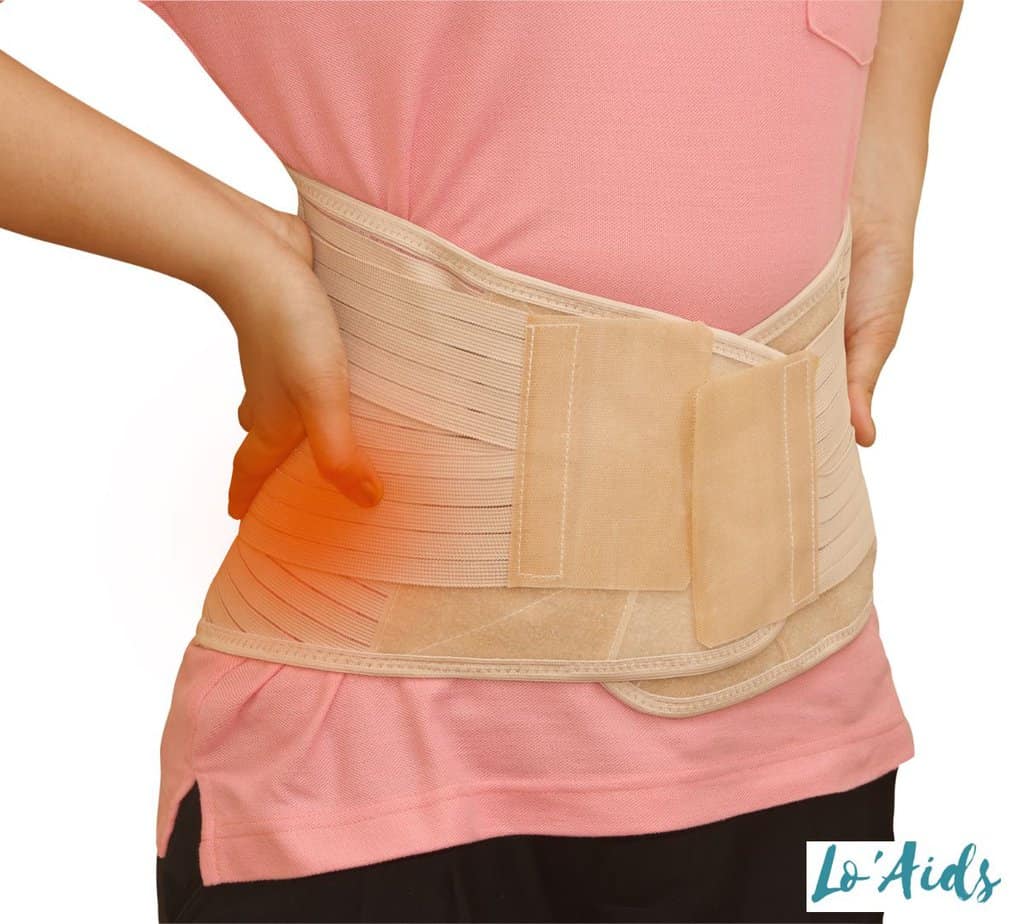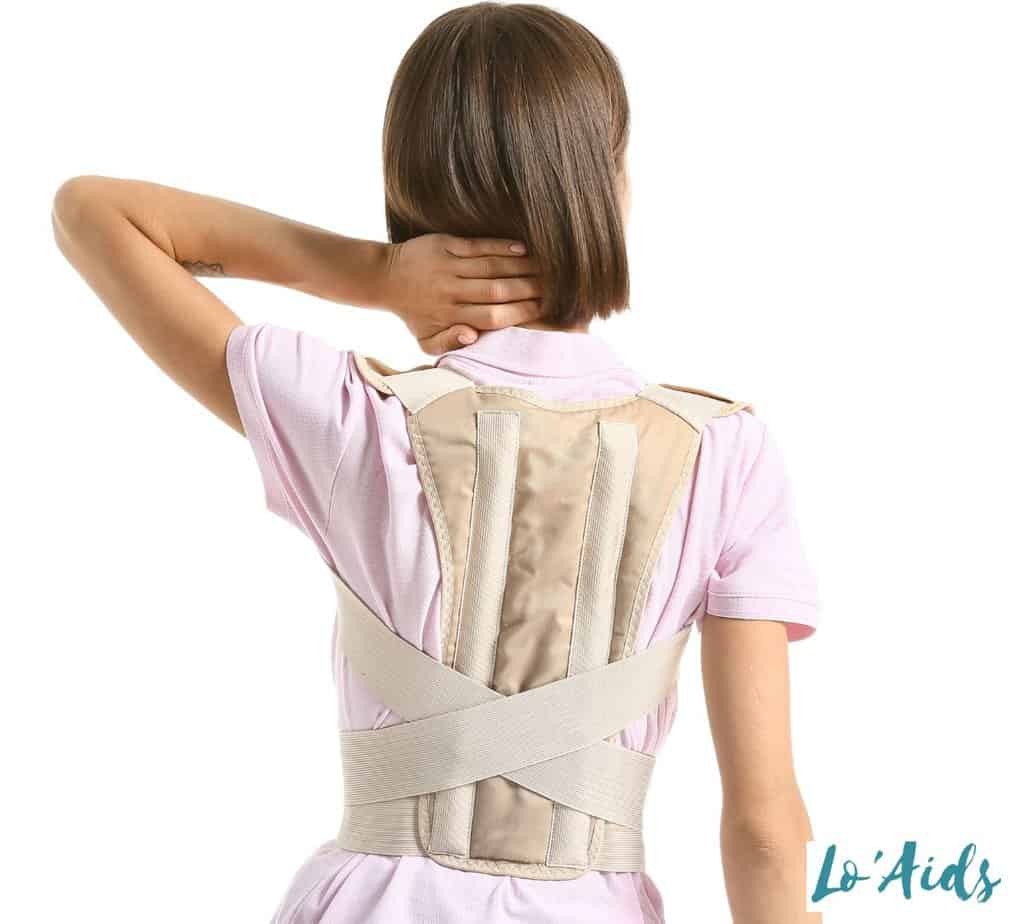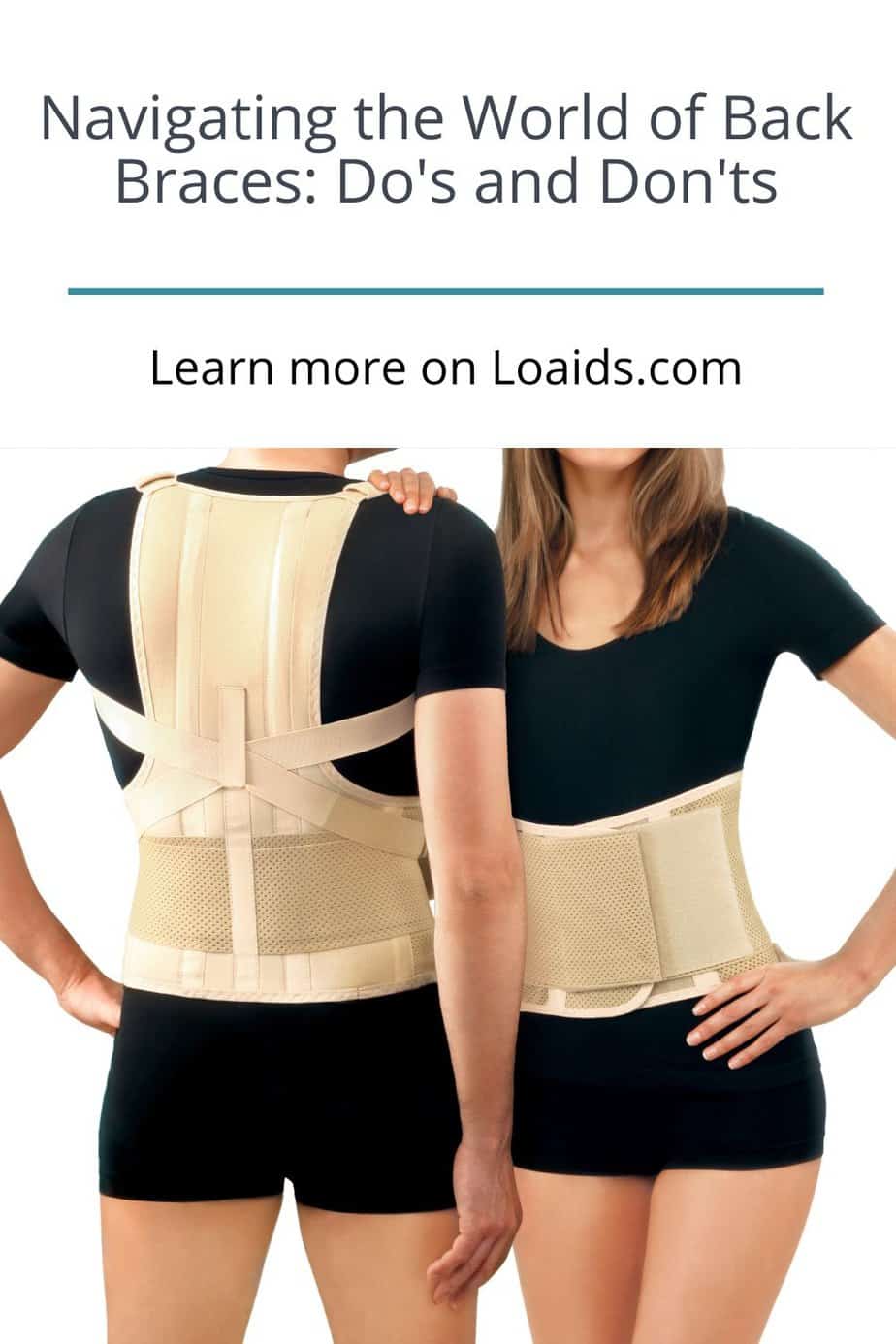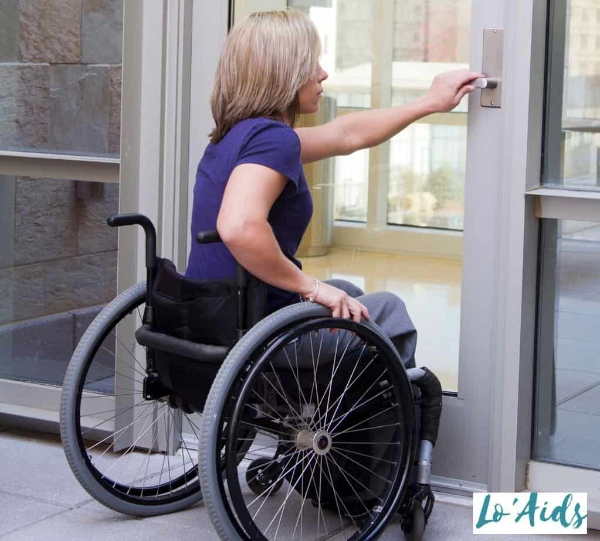“What is a back brace?”—If that’s the question nagging your mind, look no further.
According to MedicalNews.com, “A back brace is a device a person may wear to support their back – It is believed to reduce back pain, prevent injuries, promote recovery, and encourage correct posture and proper spine alignment. [1]”
Thankfully – and as an experienced Doctor– I’ve interviewed my patients to extract the best tips, delved deep into the research and practical applications of back braces – and revealed my “insider secrets” from the chief health gurus!
So, please keep reading to learn about back braces, demystifying their use, benefits, and potential impact on your life…
Table of Contents
Key Takeaways
- A back brace serves as your back’s bodyguard, providing vital support and comfort and aiding in the healing process for injuries.
- Variety abounds in back braces, from corsets and rigid braces for intense support to soft braces ideal for minor strains.
- Choosing the right back brace involves professional advice, comfort, and quality considerations—it’s like finding the perfect fit in clothing.
What is a Back Brace? An Easy Guide
In simpler terms, a back brace serves as your back’s personal bodyguard—providing support, alleviating discomfort, and even aiding in healing injuries.

The Science of Support
According to a fitting review published in the journal Biomechanics, ‘Spinal bracing is a common non-surgical technique that allows clinicians to prevent and correct malformations or injuries of a patient’s spinal column. [2]‘
This insight gives an authoritative perspective on the importance and application of spinal braces [2].
Back braces essentially limit specific movements, relieve spinal pressure, and help redistribute the load your back carries daily, which is especially beneficial in conditions like spinal stenosis.
For more back brace wisdom, explore this pristine video featuring the many reasons back braces can help you!
3 Types of Back Braces: Understanding Your Options
Just like ice cream flavors, back braces come in all sorts. Here’s what you need to know!
1. Corsets
Being regularly confused with Victorian fashion, Corset braces form part of a comprehensive treatment plan for certain back conditions.
These braces – with their plastic components designed to restrict unnecessary spinal movements – enhance your quality of life by providing extraordinary lower back support.
Corset braces are Often used as a conservative treatment option, and significantly contribute to pain management and rehabilitation.
2. Rigid Braces
Regarding supporting and immobility, nothing beats rigid types of back braces.
Engineered to protect your spinal structures, these braces rid you of the pain and hardship caused by more serious back issues.
By supporting the healing process and increasing your daily functionality, rigid braces are designed to restrict movement effectively.
Better yet (and this is what Doctors love about them!), they form part of a comprehensive treatment plan, usually recommended for specific, severe medical conditions.
3. Soft Braces
Soft braces are an ideal choice for those who lead an active lifestyle.
These soft plastic braces with adjustable straps provide moderate support while correcting posture during physical activities.
They’re perfect for preventing minor muscle strains or sprains and help maintain spinal alignment.
Being easy to adjust and comfortable to wear under clothes, soft braces are your allies for preventive and supportive care during active living.
Before you head out, here’s a quick summary!
| Type of Back Brace | Description | Uses |
|---|---|---|
| Corsets | Similar to Victorian corsets, they restrict motion and provide lower back support. | Ideal for conditions requiring limited motion and enhanced lower back support. |
| Rigid Braces | Strong back support, robust and restrictive. | Great for significant back conditions requiring strong support, such as after spinal surgery. |
| Soft Braces | Soft braces provide mild support like a gentle pillow. | Perfect for managing minor muscle strains or sprains and maintaining a straight spine during physical activity. |
How Back Braces Support Your Spine
Dr. J. Cholewicki and his colleagues, in their research published in the Journal of Biomechanics, stated that “a back brace increases the stability of the spine by increasing the stiffness of the trunk and by reducing the trunk motion variability. [3]’

You’ve heard it! Back braces aren’t just a fancy accessory but are necessary for several scenarios.
1. By Improving Your Posture
Whether combating chronic pain, improving posture, or aiding recovery from work-related injuries, a back brace can make a significant difference.
2. By Preventing Injury
Ever had a back injury? Then you know that a back brace can be a true companion during recovery.
This brace can be that “magic weapon” in your battle against the dreaded slouch, aiding in maintaining proper posture, which is critical for overall spinal health.
3. By Combating Chronic Pain
In reference to a study published in the Journal of Pediatric Orthopedics, Dr. M. R. Konieczny and his team stated that ‘The brace treatment was successful in 79% of the patients with AIS.
The success rate was higher in patients with thoracic and double major curves compared to lumbar or thoracolumbar curves. [4]”
“The initial correction of the curve in the brace,” they write, “was the most significant predictor for a successful outcome.”
How to Choose the Best Back Brace: 3 Essential Factors to Consider
Even though the benefits of a back brace are utterly magnetic, it can be hard to choose which one to get.
To make it a breeze, check out these 3 helpful factors!
Factor 1: Professional Advice is Priceless
Choosing the right back brace is akin to finding the perfect pair of jeans—it must fit just right. Ideally, It should be discreet, allowing for ease of wear during your daily activities.
This isn’t a decision to wing – always involve a healthcare professional when picking a back brace.
Factor 2: Comfort is King
Remember, this brace will be hugging you for quite a while, so comfort can’t be compromised.
And while you want a custom-fit brace, remember, a brace with a removable lumbar pad might also add to your comfort…
Factor 3: Quality Matters
Quality is a vital factor when choosing a back brace.
According to a study published in the Journal of Surgical Endoscopy,
‘The use of a lumbar brace after laparoscopic colorectal surgery was associated with a significant reduction in postoperative pain and analgesic requirement. The brace group also had a shorter hospital stay. [5]’
This reinforces the importance of investing in a quality back brace, as it can significantly reduce postoperative pain and shorten hospital stays.
Navigating the World of Back Braces: Do’s and Don’ts
There’s more than meets the eye when it comes to back braces. It’s not just about wearing one; it’s about wearing it right, understanding its role in your recovery or pain management journey, and incorporating it with an effective exercise program for back health.
Understanding this balance is key to creating a comprehensive treatment plan for spinal issues.
Here’s a handy one-glance summary table outlining the crucial do’s and don’ts to guide your journey.
| Do’s | Don’ts |
|---|---|
| Follow Directions | Over-Depend |
| Take Care of Your Skin | Ignore Your Body’s Signals |
| Regular Maintenance | Skip Follow-Up Appointments |
The Dos: What You Should Follow
1. Do Follow Directions
Your back brace isn’t just another accessory that you can wear (as you please) or toss away.
It’s a medical device designed to support your back, especially in cases of lumbar pain or muscle weakness, and it needs to be worn correctly to do its job.
Always follow your healthcare provider’s instructions on when and how long to wear the brace.
2. Don’t Over-Depend
While a back brace can provide much-needed support and relief, especially in cases of acute injury or chronic pain, it shouldn’t be viewed as a complete solution to your back problems.
Using it and a proper exercise program, can help create a healthy healing environment for your spine.
3. Do Take Care of Your Skin
But remember, your brace is in direct contact with your skin for extended periods.
To avoid skin irritation, consider choosing a brace with a breathable fabric and ensure the brace is clean.
The Don’ts: What You Should Avoid
Here are the caveats – stay away at all costs!
1. Don’t Ignore Your Body’s Signals
If you’re experiencing increased pain, discomfort, or any unusual sensations while wearing your back brace, don’t ignore these signs.
Your body knows what is best for you, so listen to it and consult your healthcare provider if needed.
2. Don’t Skip Regular Maintenance
Like any device, your back brace requires regular upkeep.
Keep it clean according to the manufacturer’s instructions and inspect your brace for any signs of wear and tear (do this regularly.).
If it has adjustable or compression straps, confirm they are in fair condition and ensure they function correctly.
3. Don’t Skip Follow-Up Appointments
Regular check-ups with your healthcare provider are crucial when using a back brace. They can assess your progress, make necessary adjustments to your brace, and guide your continued use.
Frequently Asked Questions
1. What is a back brace used for?
A back brace is your back’s personal cheerleader, offering support, aiding in posture correction,
2. Does a back brace help with back pain?
Yes, indeed! A back brace can be pivotal in managing back pain by offering the necessary support and restricting certain movements that might worsen the pain.*
3. Can I wear my back brace every day?
While wearing your back brace every day might be inviting, it’s crucial to follow your healthcare provider’s advice to avoid muscle atrophy and over-dependency.
4. Does a back brace help improve posture?
Absolutely! A back brace can be your secret weapon in the battle against slouching and poor posture.
5. Are there any risks of using a back brace?
If misused or worn for too long without professional guidance, a back brace could lead to muscle weakness or over-dependency on the brace.
6. Can I exercise while wearing a back brace?
Yes, but discuss this with your healthcare provider to ensure you’re doing so safely.
Exercising while wearing a back brace can strengthen core musculature, which is essential for back support.
Conclusion: Back to Basics
So, with your newfound knowledge to your question, “What is a back brace”, you are better equipped to manage your back health – be it by easing muscle tension at home or dealing with a condition like spinal stenosis.
Remember, maintaining an active lifestyle and understanding the role of a medical professional in treating back issues is as important as wearing a back brace.
However, it’s not a magic wand, and using a back brace under professional guidance is crucial.
A back brace can significantly improve the quality of life for those grappling with back-related issues, but remember; it’s not a one-size-fits-all solution.
The same applies to managing back health. Efforts like using a back brace, exercising regularly, and maintaining good posture can significantly improve your back health.
Leave me a comment before you leave – and I’m sure you’re excited to get your back brace. I’d love to hear about your experiences!
Until next time…

References
1. Kandola A. 8 lower back stretches for flexibility and pain relief [Internet]. www.medicalnewstoday.com. 2020. Available from: https://www.medicalnewstoday.com/articles/lower-back-stretches#summary
2. Cerillo JL, Becsey AN, Sanghadia CP, Root KT, Lucke-Wold B. Spine Bracing: When to Utilize—A Narrative Review. Biomechanics [Internet]. 2023 [cited 2023 Apr 8];3:136–54. Available from: https://www.mdpi.com/2673-7078/3/1/13
3. Redaelli DF, Abbate V, Storm FA, Ronca A, Sorrentino A, De Capitani C, et al. 3D printing orthopedic scoliosis braces: a test comparing FDM with thermoforming. The International Journal of Advanced Manufacturing Technology. 2020;111:1707–20.
4. Rahman T, Sample W, Yorgova P, Neiss G, Rogers K, Shah S, et al. Electronic monitoring of orthopedic brace compliance. Journal of Children’s Orthopaedics [Internet]. 2015 [cited 2020 Jan 5];9:365–9. Available from: https://www.ncbi.nlm.nih.gov/pmc/articles/PMC4619370/
5. Albayrak A, van Veelen MA, Prins JF, Snijders CJ, de Ridder H, Kazemier G. A newly designed ergonomic body support for surgeons. Surgical Endoscopy. 2007;21:1835–40.





